Friedrich Hoxa 1839
Description
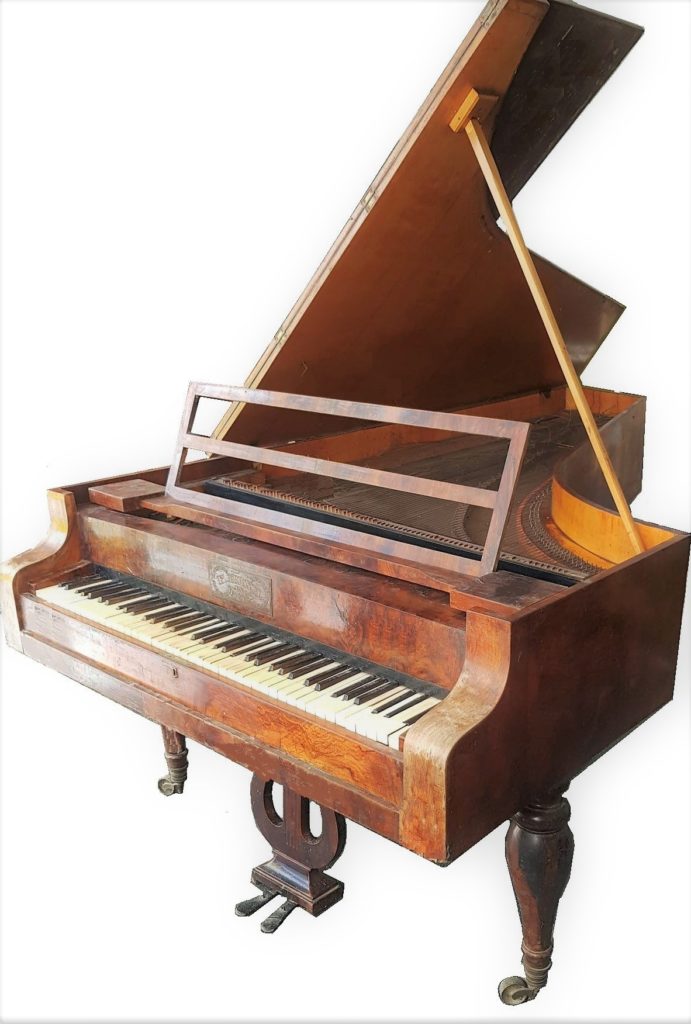
| Date: | 1839 |
| Origin: | Vienna |
| Serialnumber: |
Friedrich Hoxa was one of the most important piano makers in the 19th century. Unfortunately, only a few of his instruments have survived. Characteristic of his instruments are the exquisite workmanship, the beautiful tone and the constant inventiveness of Hoxa, which can be found in several innovative patents for the further development of piano construction. In the 19th century his instruments were highly valued in Europe and were shipped to Turkey and Egypt in particular, where he had developed a large group of customers. Also, important artists like Franz Liszt (1811 – 1886) played instruments from his workshop.
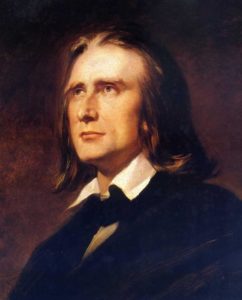
Franz Liszt 1856 – Painting by Wilhelm von Kaulbach (1805 – 1874)
This fortepiano was built around 1839 and still shows the angular shape. At that time, metal bars and metal frames to reinforce the case and structure were already common, which this piano does not have. It is still made entirely of wood according to the traditional construction method. The case is made of walnut and rests on three baluster legs. The keyboard is made of ivory and ebony and the hammers are covered with leather. Viennese action, straight strung with a divided bridge and two pedals (dampers and una corda) the piano has a compass of 6 octaves + fifth (CC – g4). Above the strings there was a second soundboard (similar to the dust / soundboards on French grand pianos or early English square pianos) that was missing. Hoxa received a patent for this in 1826, in which an additional soundboard was attached to the strings.
For more information on additional resonance / dust covers, click here.
The nameboard bears the inscription:
„F. Hoxa
in
Wien
Silberne Medaille Ausstellung 1839“
There is also a second signature that can be found on a paper label to the soundboard:
„Johann Gugl
Klavier – Verkauf
Leih – Etablissement
Hauptgeschäft
Wien“
This signature comes from the workshop of Johann Gugl, who was a piano dealer in the 19th century and who ran an instrument shop at Bauernmarkt No. 588 inside the Gundelhof in Vienna.
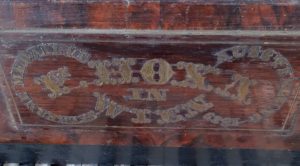
Friedrich Hoxa, Wien 1839 – Eric Feller Collection (Nameboard)
Friedrich Hoxa was born in 1793 and it is believed that he was of Bohemian descent. In 1824 he received the citizenship of the city of Vienna and official permission to work as a piano maker. In April 1826 he received a five-year privilege and patent for the invention of a grand piano with a double soundboard, one above and one below the strings. In 1828 he suffered severe strokes of fate: his wife Aloysia Teschmayer (born 1785 in Vienna) died on May 19th and his son Rudolph (born 1826) on August 8th, 1828. She left him two more children: Karolina (born 1819) and Friedrich (born 1821), who also died in the following years. At that time the family lived in Altlerchenfeld No. 73. From 1825 on he was President of the “Corporation of Piano Builders Vienna”. In this position he was highly respected. He was very committed to ensure that only official piano makers with citizenship of the City of Vienna should built instruments. In an article dated March 12, 1843 in the Vereinigte Ofner-Pester-Zeitung, he openly advocated this together with Anton Tomaschek (1806 – 1860).
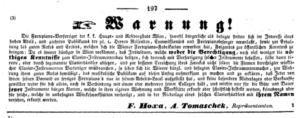
Newspaper article from 12.3.1843 in “Vereinigte Ofner-Pester-Zeitung”
Hoxa was highly recognized for his commitment and so an article appeared in the magazine “Der Wanderer” on March 8, 1845 about a public honour for his work.
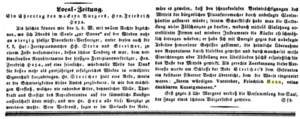
Article 8.3.1845 from the magazine “Der Wanderer”
At the Dritten Allgemeinen Österreichische Gewerbeausstellung in Wien in 1845, Hoxa’s instruments were highly recommended and he received the gold medal as an award for his work.
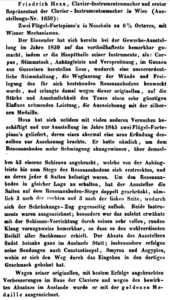
Report from the 3. Allgemeine Österreichische Gewerbeausstellung in Wien, 1845
Very interesting in this report is the statement that Hoxa’s sales of instruments mostly went to distant countries like Constantinople (now Istanbul), Smyrna (now Izmir) or Egypt. It is very likely that his new innovations in piano building with metal frames, plates and bars were the reason why his instruments were so successful, especially in these warm climatic latitudes.
In 1851, at the London exhibition, Hoxa exhibited a 7-octave grand piano made of Hungarian poplar with metal bars and a brass string plate. Friedrich Hoxa probably died around 1858.
Other preserved instruments by Friedrich Hoxa:
- ca.1830 fortepiano – Conservatorio di Musica Perugia, Italy
- 1840/44 fortepiano – Technical Museum Vienna, Austria
| Length: | 240 cm |
| Width: | 130 cm |
| Height: | 35 cm |
| Circumference: | 6 octaves + fifth (CC - g4) |
| Mechanics: | Viennese Action |
| Pedals: | 2 Pedals (dampers & una corda) |
| Signature: |
„F. Hoxa in Wien Silberne Medaille Ausstellung 1839“ Signature on soundboard: „Johann Gugl Klavier – Verkauf Leih – Etablissement Hauptgeschäft Wien“ |

